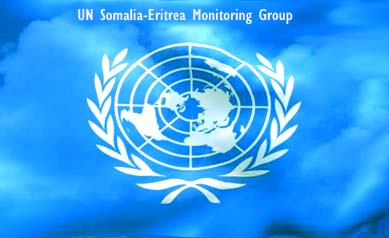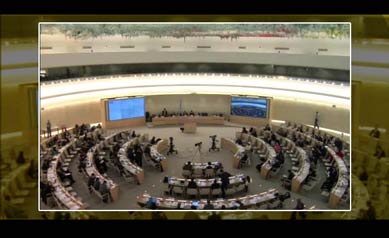Eritrea-Ethiopia Cold War Heats Up, But War Drums Silent
In contrast to their 1998-2000 “border war,” where intermittent but deadly clashes were preceded by long taunts, the Eritrean and Ethiopian governments seem to have adopted, for different reasons, a policy of resuming their military clashes silently, while re-aligning each other’s exiled opposition.
In the last week of April the Eritrean regime conducted a massive campaign of calling up its reserves—men as old as sixty. The week was the last week of Eritrean strongman Isaias Afwerki’s four-week unexplained absence and, at the time, there was speculation that this had something to do with the unconfirmed news (now confirmed false) that he was dead or dying.
The previous month, on March 15 and then again on March 17, 2012 the Ethiopian government had carried out military incursions about 15 kilometers into Eritrea. The March 15 attacks targeted Ramida, Gelahbe, and Gimbi in the Afar region of Eritrea (Northern Red Sea) and the March 17 foray resulted in the occupation of Adi Teklai, Sheshebit and surroundings (just north of the heavily contested Badme flashpoint area in Southwestern Eritrea.) The Ethiopian government admitted that it had carried out the March 15 incursion, explaining it as an attack against armed Ethiopian opposition based in Eritrea, while denying as false the March 17 attacks.
Following the March 15 attacks, the Ethiopian government held a press conference and its Ministry of Foreign Affairs issued a statement essentially claiming that the Eritrean regime was incapable of retaliatory action. The Eritrean regime did not provide its version of what happened; it quoted the Ethiopian version and then stated that it had no intention of being trapped by war.
There are reports now, contradictory in nature, that there was a military clash just north of the Badme region, on or around May 25th. Sources which are sympathetic to the Ethiopian government claim that Eritrea had attempted to re-take bases and evict Ethiopia from occupied territories, and that it was rebuffed. Eritrean sources say that the Ethiopian government had taken additional retaliatory measures claiming that Eritreans and Ethiopian opposition groups in Eritrea were “kidnapping” miners from the Tigray region of Northern Ethiopia. There are wild claims and counter-claims of mercenaries and senior officials held prisoners of war, but the two governments have yet to issue a statement and/or complain to the United Nations.
The Ethiopian government is choosing not to publicize the incursions: after all, it is inside undisputed Eritrean territories. The Eritrean regime is not publicizing the event for fear of spooking the stock of Nevsun (Canadian mining company) and its valuation which is premised on having a peaceful and secure Bisha gold mine–which is not too far from the conflict area. The Eritrean regime’s agreement to acquire a larger percentage of Bisha is conditioned on Nevsun’s ability to extract and sell metals (initially gold, and later bronze), the less the interruption, the quicker it gains additional ownership.
What is clear, from the Eritrean side, is that there is still a calling up of reserves as well as demobilized Eritreans back into military service.
Exiled Opposition
With Sudan and Djibouti being either impractical or hostile locations for the Eritrean political organizations committed to uprooting their country’s regime, Ethiopia has been the logical and sometimes the only host nation. For the last 14 years, Ethiopia has been engaged in either creating and/or influencing opposition groups to align their vision of post-PFDJ Eritrea—without much success.
Meanwhile, the Eritrean regime, which hosts a myriad of Ethiopian opposition groups, seems to have abandoned the policy of taking an amalgamation of a hodgepodge force of Ethiopian opposition armed forces (organized along ethnic lines) and molding them into its-mirror image, in favor of an organization led by Tigray-dissidents (same ethnicity as the core of Ethiopia’s ruling party.)
In Addis Abeba, the Ethiopian regime has been, for just as long, trying to mold the Eritrean opposition into its image: an ethnic federation (EPRDF) with one organization having a leading role (TPLF.) This has been met with fierce resistance by much of the Eritrean opposition and all of the attempts to circumvent it have thus far failed. Having concluded that the Eritrean opposition (EDA and ENCDC) are not open to change, the Ethiopian government is now attempting to work around them and empower youth organizations outside the EDA/ENCDC umbrella.
On June 13, 2012, General Mesfin Amare, who is handling the Eritrean portfolio, met with the leadership of the Eritrean Democratic Alliance (EDA), the umbrella group of the exiled opposition groups, for a candid assessment of where they are and what Ethiopia’s intentions are.
- General Mesfin Amare complained that the offices of the Eritrean Democratic Alliance are barely staffed;
- The Eritrean political organizations and civil society organizations are proliferating and there are no serious attempts to harmonize their campaigns; in this regard, the political organizations are bad, the civil society are even worse, he said. There is a great demand by the youth organizations to be recognized and be given space in Ethiopia, but Ethiopia has thus far resisted as it does not intend for the youth organizations to follow in the footsteps of the established organizations and fragment further;
- It has been seven months since the National Conference was concluded and there has been no measurable work done. Why?
In turn, the leadership of the Eritrean Democratic Alliance stated:
- It knows nothing of the youth conference which is being hosted by Ethiopia on July 4th: that it heard about it along with others. The National Conference (ENCDC) has a youth wing which could accommodate and absorb a youth conference;
- Many of the Eritrean youth who are recent arrivals from Eritrea have been, regrettably, marinated in PFDJ culture and they do not have real experience with democracy, political pluralism and diversity and have developed animosity to political parties;
- The strategy the Ethiopian government is taking of quartering Eritreans in refugee camps on the basis of ethnicity is the wrong approach as it polarizes them.
- The “favoritism” that the Ethiopian government shows towards member organizations of the EDA also creates suspicion.
As Gedab News reported on April 2, the Ethiopian government attended the conference of a start-up youth organization in a camp near Shire, Ethiopia. The organization, Eritrean Movement for Democracy and Justice (EMDJ) has a political programme which supports “self-autonomy without restriction” and claims that it has a military wing. Now, there is another Youth Conference scheduled in Ethiopia for July.
//END
http://www.awate.com




Awate Forum